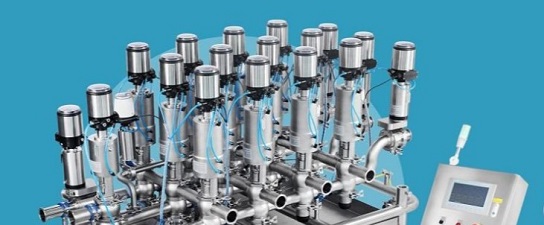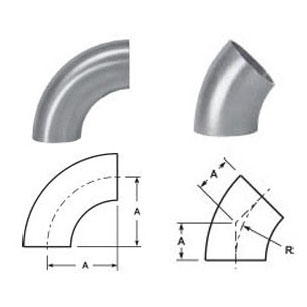Sanitary Elbow Overview

What is a Sanitary Elbow?
A sanitary elbow is a kind of sanitary fitting installed between two lengths of pipe or tubing to allow a change of direction. While these corner fittings are usually a 90° or 45° angle, 22.5° elbows are also available. The ends may be machined for butt welding, threaded, or socketed. When the ends differ in size, it is known as a reducing elbow. Another key characteristic of sanitary elbow fittings is in the name — they’re sanitary. These fittings are built with non-toxic, corrosion-resistant materials for use in industries that demand “food-grade” cleanliness, ensuring zero contamination of the fluid medium. Sanitary elbows are typically made of the stainless steel grade 304 or 316 to provide a sterile and corrosion-free surface.

What is a sanitary elbow fitting
How are Sanitary Elbow Fittings Measured?
Sanitary fittings are primarily measured by the Outside Diameter (OD) and Inside Diameter (ID) of the tube end or flange end. This measurement, known as the “sanitary size,” usually ranges from ½” up to 12”.
Sanitary elbow fittings are also measured by their degree of bend. A 90º elbow, also known as a “90 bend,” “90 L,” or “quarter bend,” attaches readily to plastic, copper, cast iron, steel, and lead and is attached to rubber with stainless-steel clamps. Other available materials include silicone, rubber compounds, galvanized steel, and nylon. These sanitary fittings are primarily used to connect hoses to valves, water pumps, and deck drains.
A 45º elbow, also known as a “45 bend” or “45 L,” is commonly used in water-supply facilities, food, chemical, electronic industrial pipeline networks, air-conditioning pipelines, agriculture, garden production, and solar-energy facility piping.
How are Sanitary Elbow Fittings Classified?
Sanitary elbows are also classified by length. A large radius elbow has a curvature radius of 1.5 times the pipe’s diameter, but a short radius elbow has a radius equal to the pipe’s diameter. Short elbows are widely available and are typically used for pressurized systems in physically tight locations.
What are the Applications of Sanitary Elbows?
Long elbows as sanitary fittings are used in low-pressure gravity-fed systems and other applications where low turbulence and minimum deposition of entrained solids are of concern. An elbow is a fitting usually available in acrylonitrile butadiene styrene, polyvinyl chloride, chlorinated polyvinyl chloride, and copper. They’re used in DWV systems, wastewater, and central vacuum systems.
Sanitary Weld Elbows are perfect for permanent assembly on processing systems that require a change of fluid direction. These fittings require robust welding for installation that offers high integrity and durability in applications that require longevity and cleaning in place (CIP).
Conclusion
Sanitary elbows are a crucial link in the chain of fluid systems everywhere. While these types of equipment are highly specialized in nature, their presence in industrial, commercial, and even residential spaces is more ubiquitous than you might think. We depend on this integral equipment to produce and deliver vital fluids at every stage, from production all the way to consumption. Sanitary elbow fittings are utilized in agricultural irrigation systems, soft drink production, beer brewing and dispensing, various plumbing systems, and more.




